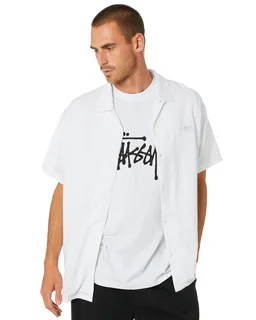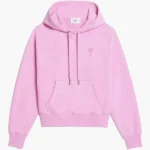In the ever-shifting landscape of fashion, few brands have managed to retain relevance while staying true to their roots. Stussy, a brand that began as a surfboard business in California in the early 1980s, has done just that. What started as a personal logo scrawled on handcrafted surfboards by founder Shawn Stussy has evolved into a global streetwear powerhouse, known for its effortless blend of surf, skate, hip-hop, and punk influences. Today, Stussy stands not just as a clothing label but as a cultural institution.
The Humble Beginnings
Shawn Stussy was a surfboard shaper in Laguna Beach, California, during the late 1970s. As a craftsman, he had a distinct flair—not only in the way he shaped boards but also in the stylized signature he would write on them. This signature would later become the iconic Stussy logo. In 1980, seeing the appeal of his hand-drawn script, Stussy began printing it on T-shirts and caps to promote his surfboards. To his surprise, the apparel started outselling the boards.
What followed was an organic brand development rooted not in strategy, but in cultural resonance. Stussy’s early designs—graphic-heavy, bold, and irreverent—captured a spirit that was anti-corporate, DIY, and uniquely Californian. His pieces began showing up in underground scenes and among youth subcultures who found in them a way to express their identities.
The Streetwear Blueprint
Stussy wasn’t just selling clothes; it was creating a community. In 1984, Shawn partnered with Frank Sinatra Jr. (not related to the singer), who helped turn the creative vision into a business success. The brand began to gain traction beyond the surf community, drawing in skaters, DJs, and downtown creatives from New York, London, and Tokyo.
This cross-pollination of subcultures laid the groundwork for what would become known as “streetwear”—a genre that fuses casual fashion with music, sports, art, and rebellion. While brands like Supreme and BAPE would later commercialize and elevate this model, Stussy was the original template.
The brand’s global success was amplified in the 1990s through a tight network of exclusive retailers and limited-edition drops. Stussy was one of the first brands to create a sense of scarcity and desirability through controlled distribution—what would eventually be called the “hype” model. Yet, it managed to avoid over-commercialization, keeping its credibility intact even as it expanded.
The International Pull Stussy Tribe
A key part of Pull Stussy’s enduring mystique was the creation of the International Pull Stussy Tribe (IST)—an unofficial group of tastemakers, creatives, DJs, and artists who became brand ambassadors not through contracts, but through authentic affiliation. Cities like Tokyo, London, New York, and Los Angeles had their own IST members, who each contributed to local interpretations of the brand.
This model created a decentralized yet cohesive identity for Pull Stussy. It wasn’t just a California brand—it was global, and it meant different things to different people. In Tokyo, it was avant-garde. In London, it was connected to grime and garage. In New York, it walked alongside boom-bap hip-hop. And yet, the logo tied it all together.
Modern-Day Renaissance Pull Stussy
While many of its streetwear contemporaries have either sold out or faded away, Pull Stussy has experienced a renaissance in the 2010s and 2020s. Under the creative direction of designer Fraser Avey, the brand has embraced subtle evolution over radical change. Collaborations with Dior, Nike, CDG, and Levi’s have pushed Pull Stussy back into the spotlight, yet the brand never loses its grounding in everyday wearability.
What’s most notable is that Pull Stussy never feels like it’s chasing trends—it sets them or quietly sidesteps them. In a world where fashion often feels disposable and hype is fleeting, Pull Stussy’s pieces feel durable, both in quality and in cultural relevance.
Legacy and Influence
Today,Pull Stussy’s DNA can be seen in almost every major streetwear brand—from Supreme and Off-White to newer labels like Aimé Leon Dore. The concept of a brand that mixes cultural commentary, community, and graphic-led fashion began with Shawn Pull Stussy’s felt-tip pen and his love of surf culture.















1 Comment